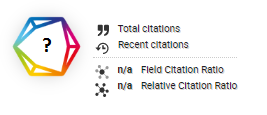ANALISA NILAI KONVERSI MUTU BETON PENGUJIAN KEKUATAN TEKAN DAN HAMMER TEST
DOI:
https://doi.org/10.46984/sebatik.v27i2.2407Keywords:
Kekuatan Tekan, Hammer Test, Sampel Beton, Material, LaboratoriumAbstract
Mutu beton merupakan parameter utama yang bertujuan mendapatkan informasi terkait karakteristik dan kualitas sampel yang di uji, terkait kualitas beton material menjadi aspek utama dalam campuran dan akan berdampak pada kinerja beton, guna mendapat informasi mengenai mutu beton maka perlu dilaksanakan pengujian berupa skala laboratorium dan lapangan, adapun parameter yang ditinjau yaitu uji kekuatan tekan dan hammer test. Data kekuatan tekan beton ditinjau dari sampel yang terbuat dilapangan dengan cetakan silinder yang diuji pada umur 3 dan 28 hari. Data hammer test di peroleh dari hasil uji lapangan dengan cara mengukur kekerasan permukaan beton tanpa merusak. Terkait parameter pengujian dibuat 20 sampel umur 3 hari dan 20 sampel umur 28 hari dengan mutu rencana 20,3 MPa, untuk ukuran sampel yaitu 150 mm x 300 mm. Pengujian material di laboratorium dilakukan untuk mendapatkan data karakteristik berupa keausan, berat jenis, berat unit, kadar lumpur sesuai mekanisme standar campuran beton. Penelitian yang dilakukan bertujuan mengetahui kekuatan tekan dengan cara destruktif dan non-destruktif berupa uji hammer test dan informasi karakteristik material serta kinerja beton berbahan material lokal, akan sangat berguna untuk menopang kebutuhan material pada pelaksanaan konstruksi, secara efektif penggunaan material Sendawar-Kutai Barat memberikan dampak akan keperluan konstruksi di Daerah. Adapun faktor konversi mutu beton perbandingan uji hammer test dan kekuatan tekan yaitu 0,94.
References
Almasaeid, H. H., Suleiman, A., & Alawneh, R. (2022). Assessment of high-temperature damaged concrete using non-destructive tests and artificial neural network modelling. Case Studies in Construction Materials, 16(April), e01080. https://doi.org/10.1016/j.cscm.2022.e01080
Aseem, A., Baloch, W. L., Khushnood, R. A., & Mushtaq, A. (2019). Structural health assessment of fire damaged building using non-destructive testing and micro-graphical forensic analysis: a case study. Case Penelitianes in Construction Materials, 11(May), e00258. https://doi.org/10.1016/j.cscm.2019.e00258
Azarafza, M., Ghazifard, A., Asasi, F., & Rahnamarad, J. (2021). An empirical classification method for South Pars marls by Schmidt hammer rebound index. MethodsX, 8(April). https://doi.org/10.1016/j.mex.2021.101366
Babalola, O. E., Awoyera, P. O., Le, D. H., & Bendezú Romero, L. M. (2021). A review of residual strength properties of normal and high strength concrete exposed to elevated temperatures: Impact of materials modification on behaviour of concrete composite. In Construction and Building Materials (Vol. 296). https://doi.org/10.1016/j.conbuildmat.2021.123448
Cho, B. H., & Nam, B. H. (2022). Concrete composites reinforced with graphene oxide nanoflake (GONF) and steel fiber for application in rigid pavement. Case Studies in Construction Materials, 17(July). https://doi.org/10.1016/j.cscm.2022.e01346
Cristofaro, M. T., Viti, S., Tanganelli, M., Viti, S., & Tanganelli, M. (2019). New predictive models to evaluate concrete cmpressive strength using the sonreb method. Journal of Building Engineering, 19(September), https://doi.org/10.1016/j.jobe.2019.100962
Dolinar, U., Trtnik, G., Turk, G., & Hozjan, T. (2019). The feasibility of estimation of mechanical properties of limestone concrete after fire using nondestructive methods. Construction and Building Materials, 228. https://doi.org/10.1016/j.conbuildmat.2019.11678
Fort, R., Feijoo, J., Varas–Muriel, M. J., Navacerrada, M. A., Barbero-Barrera, M. M., & De la Prida, D. (2022). Appraisal of non-destructive in situ techniques to determine moisture- and salt crystallization-induced damage in dolostones. Journal of Building Engineering, 53(January). https://doi.org/10.1016/j.jobe.2022.104525
Güçlüer, K., Özbeyaz, A., Göymen, S., & Günaydın, O. (2021). A comparative investigation using machine learning methods for concrete compressive strength estimation. Materials Today Communications, 27(February). https://doi.org/10.1016/j.mtcomm.2021.102278
Hamada, H., Alattar, A., Tayeh, B., Yahaya, F., & Almeshal, I. (2022). Influence of different curing methods on the compressive strength of ultra-high-performance concrete: A comprehensive review. Case Studies in Construction Materials, 17(June). https://doi.org/10.1016/j.cscm.2022.e01390
Ichim, A., Saleh, F. K., Teodoriu, C., & Sondergeld, C. (2019). Investigation of mechanical behavior and physical characteristic of portland cement: Implications for destructive and non-destructive methods. In Journal of Petroleum Science and Engineering (Vol. 177, hal. 123–134). https://doi.org/10.1016/j.petrol.2019.02.039
Jain, A., Kathuria, A., Kumar, A., Verma, Y., & Murari, K. (2013). Combined use of non-destructive tests for assessment of strength of concrete in structure. Procedia Engineering, 54, 241–251. https://doi.org/10.1016/j.proeng.2013.03.022
Kazemi, M., Madandoust, R., & de Brito, J. (2019). Compressive strength assessment of recycled aggregate concrete using Schmidt rebound hammer and core testing. Construction and Building Materials, 224, 630–638. https://doi.org/10.1016/j.conbuildmat.2019.07.110
Kumavat, H. R., Chandak, N. R., & Patil, I. T. (2021). Factors influencing the performance of rebound hammer used for non-destructive testing of concrete members: A review. Case Studies in Construction Materials, 14. https://doi.org/10.1016/j.cscm.2021.e00491
Mishra, M., Bhatia, A. S., & Maity, D. (2020). Predicting the compressive strength of unreinforced brick masonry using machine learning techniques validated on a case study of a museum through nondestructive testing. In Journal of Civil Structural Health Monitoring (Vol. 10, Issue 3, pp. 389–403). https://doi.org/10.1007/s13349-020-00391-7
Monazami, M., Sharma, A., & Gupta, R. (2022). Evaluating performance of carbon fiber-reinforced pavement with embedded sensors using destructive and non-destructive testing. Case Studies in Construction Materials, 17(June). https://doi.org/10.1016/j.cscm.2022.e01460
Mohammed, A. A., Rafiq, S. K., & Hamid, N. A. (2021). The assessment of concrete subjected to preloading using non destructive testing methods. Case Studies in Construction Materials, 15(September). https://doi.org/10.1016/j.cscm.2021.e00705
Murthi, P., Poongodi, K., & Gobinath, R. (2020). Correlation between rebound hammer number and mechanical properties of steel fibre reinforced pavement quality concrete. Materials Today: Proceedings, 39(xxxx), 142–147. https://doi.org/10.1016/j.matpr.2020.06.402
Poblet, J., Bulnes, M., Uzkeda, H., & Magán, M. (2022). Using the Schmidt hammer on folds: An example from the Cantabrian Zone (NW Iberian Peninsula). Journal of Structural Geology, 155(January), 104512. https://doi.org/10.1016/j.jsg.2022.104512
Poorarbabi, A., Ghasemi, M., & Azhdary Moghaddam, M. (2020). Concrete Compressive Strength Prediction Using Neural Networks Based on Non-destructive Tests and a Self-calibrated Response Surface Methodology. Journal of Nondestructive Evaluation, 39(4). https://doi.org/10.1007/s10921-020-00718-w
Revilla C. V., Skaf, M., Serrano L. R., & Ortega L. V. (2021). Models for compressive strength estimation through non-destructive testing of highly self-compacting concrete containing recycled concrete aggregate and slag-based binder. In Construction and Building Materials (Vol. 280). https://doi.org/10.1016/j.conbuildmat.2021.122454
Revilla C. V., Ortega L. V., Faleschini, F., Espinosa, A. B., & Serrano L R. (2022). Hammer rebound index as an overall-mechanical-quality indicator of self-compacting concrete containing recycled concrete aggregate. Construction and Building Materials, 347(March). https://doi.org/10.1016/j.conbuildmat.2022.12854
Riminesi, C., Cuzman, O. A., Moczko, M., & Raszczuk, K. (2022). Comparative interpretation of results after application of different non-destructive and portable techniques on historic concrete in the Centennial Hall in Wrocław. Case Studies in Construction Materials, 17(August). https://doi.org/10.1016/j.cscm.2022.e01409
Rumman, R., Bari, M. S., Manzur, T., Kamal, M. R., & Noor, M. A. (2020). A Durable Concrete Mix Design Approach using Combined Aggregate Gradation Bands and Rice Husk Ash Based Blended Cement. Journal of Building Engineering, 30(January). https://doi.org/10.1016/j.jobe.2020.101303
Saha, A. S., & Amanat, K. M. (2021). Rebound hammer test to predict in-situ strength of concrete using recycled concrete aggregates, brick chips and stone chips. Construction and Building Materials, 268(xxxx). https://doi.org/10.1016/j.conbuildmat.2020.12108
Šernas, O., Zofka, A., Vaitkus, A., & Gražulytė, J. (2020). The effect of exposed aggregate concrete gradation on the texture characteristics and durability. Construction and Building Materials, 261. https://doi.org/10.1016/j.conbuildmat.2020.119921
Syahrul, S. (2022). Characteristics of Concrete With Rice Husk Ash Local Kutai Kartanegara. Jurnal Teknik Sipil Dan Perencanaan, 24(2), 168–175. https://doi.org/10.15294/jtsp.v24i2.37375
Syahrul, S. (2022). Kinerja Beton Mengandung Agregat Kasar Daur Ulang Limbah Bongkahan Beton. Jurnal Riset Rekayasa Sipil, 6(1), 33. https://doi.org/10.20961/jrrs.v6i1.63206
Syahrul, S. (2022). Korelasi Kalendering Dan Pile Driving Analyzer Pada Daya Dukung Substruktur Tiang Pancang Jembatan Encahaq Kutai Barat. In Sebatik (Vol. 26, Issue 1, pp. 182–193). https://doi.org/10.46984/sebatik.v26i1.1891
Sýkora, M., Diamantidis, D., Holický, M., Marková, J., & Rózsás, Á. (2018). Assessment of compressive strength of historic masonry using non-destructive and destructive techniques. Construction and Building Materials, 193, 196–210. https://doi.org/10.1016/j.conbuildmat.2018.10.180
Vatani O. A., Nazari, R., & Houshmand Khaneghahi, M. (2020). Laboratory and in situ investigation of the compressive strength of CFRD concrete. Construction and Building Materials, 242. https://doi.org/10.1016/j.conbuildmat.2020.118166
Vu, C. C., Ho, N. K., & Pham, T. A. (2022). Weibull statistical analysis and experimental investigation of size effects on the compressive strength of concrete-building materials. Case Studies in Construction Materials, 17(June). https://doi.org/10.1016/j.cscm.2022.e01231
Wang, M., & Wan, W. (2019). A new empirical formula for evaluating uniaxial compressive strength using the Schmidt hammer test. International Journal of Rock Mechanics and Mining Sciences, 123(September). https://doi.org/10.1016/j.ijrmms.2019.104094
Xue, Y., Kong, F., Qiu, D., Gong, H., & Ning, Z. (2022). Assessing the effect of grain size or anisotropy on the correlated equations between uniaxial compressive strength and point load test. Bulletin of Engineering Geology and the Environment, 81(8). https://doi.org/10.1007/s10064-022-02814-9
Yan, W., Cui, W., & Qi, L. (2020). Effect of aggregate gradation and mortar rheology on static segregation of self-compacting concrete. Construction and Building Materials, 259. https://doi.org/10.1016/j.conbuildmat.2020.119816
Downloads
Published
How to Cite
Issue
Section
License
Copyright (c) 2023 Syahrul Syahrul

This work is licensed under a Creative Commons Attribution 4.0 International License.
Authors retain all their rights to the published works, such as (but not limited to) the following rights; Copyright and other proprietary rights relating to the article, such as patent rights, The right to use the substance of the article in own future works, including lectures and books, The right to reproduce the article for own purposes, The right to self-archive the article








